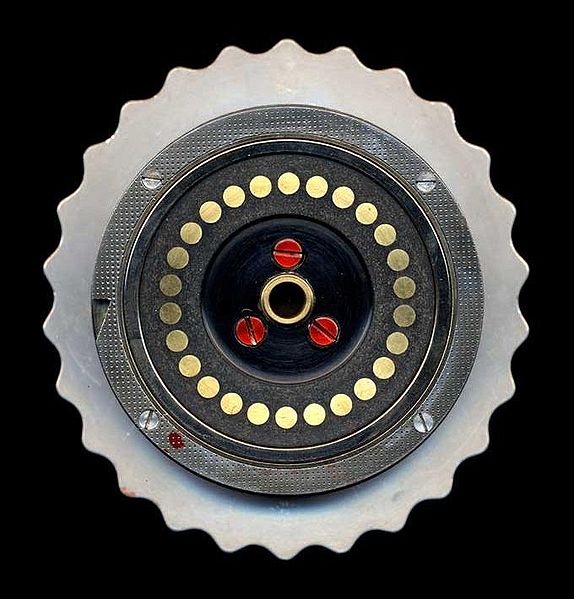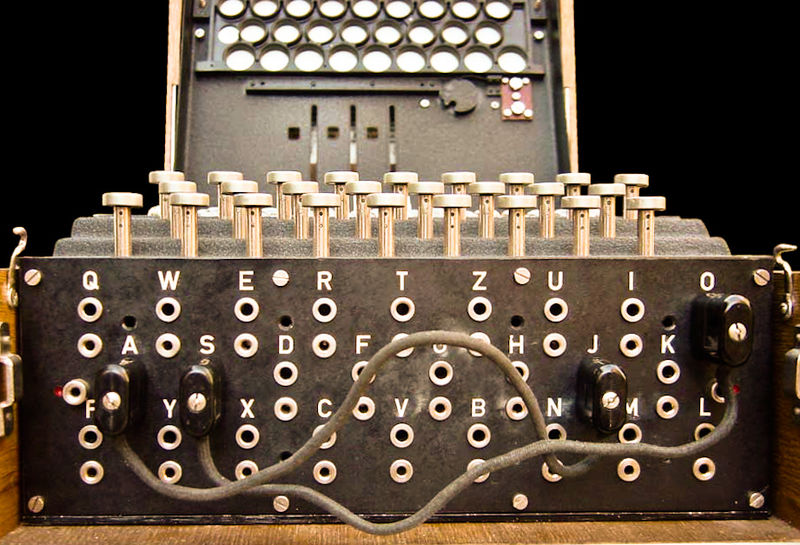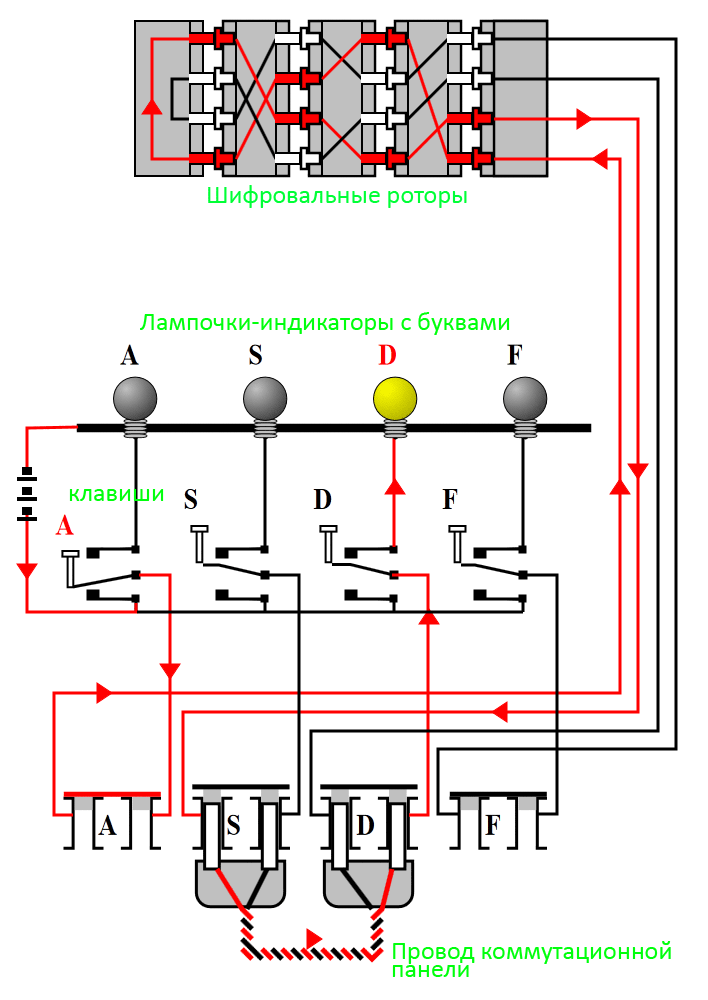Enigma - encryption of messages in the war
 Many have heard that during the Great Patriotic War, the German side used a special encryption machine, Enigma, for encryption.
Many have heard that during the Great Patriotic War, the German side used a special encryption machine, Enigma, for encryption. According to sources, this device was a new word in cryptography of that time.
How did she work?
Replacement code
For starters, you should know what a "replacement code is." This is a common substitution of one letter for another. Those. in such a cipher, instead of the letter “A”, for example, “T” is used, instead of “B” - “S”, etc.
Such a cipher is cracked quite simply. If there is a more or less long encrypted message, you can perform a frequency analysis and compare it with the frequency of use of letters in the language. Those. if there are a lot of letters “T” in the message encrypted with the replacement cipher, then this is a clear sign that some vowel is hidden behind this letter (for example, “A” or “O”, because usually these letters are the most frequent in the language) .
Enigma device
Enigma was a kind of dynamic cipher of Caesar. Those. Initially, a certain initial value (a sort of random seed) was set on the drums, which was the key. Further, when typing letters, each letter was encrypted with a Caesar cipher, and then, this cipher was changed to another.
The cipher change was provided with the help of rotors.

The rotors were disks, which had 26 contacts on each side, connected inside the rotor in a certain (random) way. It was passing through the rotor that the signal was converted from the letter “A” to the letter “T”, etc.
There were several rotors and they turned after each character was typed (in the manner of a drum counter).
In addition, there was also a patch panel into which you could insert wires that changed letters in pairs. Those. sticking the wire at one end into socket “A” and the other at “E”, you reversed these letters.

The principle of operation can be understood by looking at the circuit diagram: The

number of rotors varied in different years and for different purposes (for example, Enigmas with a large number of rotors were used in the fleet).
To complicate the hacking, the operators coded frequently used words (names) each time in different ways. For example, the word “Minensuchboot” could be written as “MINENSUCHBOOT”, “MINBOOT”, “MMMBOOT” or “MMM354”
Accessories
As with any popular device, Enigma had a large number of accessories (yes, it started already then).
For example, there were auto-printing devices (in the normal version, the coding was carried out by the light bulbs, the values of which the operator had to record).
In addition, there were remote printing devices (on wires, of course). So that the operator driving the encrypted message into the machine does not have access to the decrypted one.
